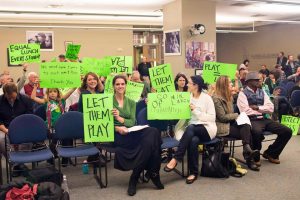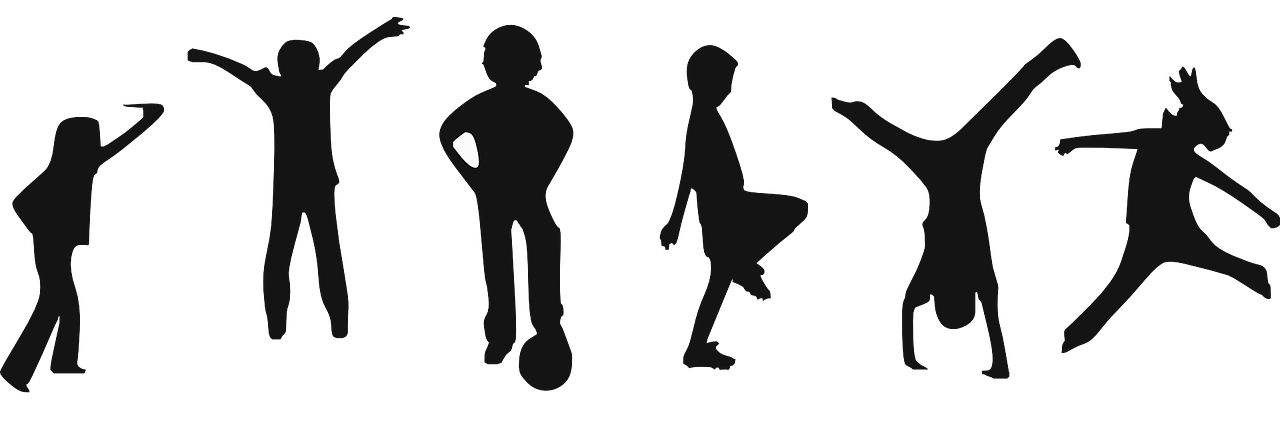Through creating my website on the lack of adequate physical activity in urban students’ daily lives and the grassroots organizations dedicated to solving this problem, I came to truly appreciate how small, focused, and local movements are often the most powerful change makers.
In the beginning of search for grassroots organizations fighting for student play time and exercise, I found countless large non-profits that were dedicated to helping children live healthier and more active lives. Michelle Obama’s “Let’s Move” campaign is one such advocacy group and, while these groups are certainly well meaning and very likely do powerful work, they were not rooted in the communities they looked to support. Though I found many of these organizations, I struggled to find non-profits that started within communities and remained grounded there even after they received influxes of capital through donations and grant money. I felt stuck, until I realized that I was looking for a middle ground when I should have been looking for the most bare-boned organizations possible. This is when I turned to Facebook.

Lunch and Recess Matter organizing for change in Seattle schools
The social media platform contains a host of digital organizations, groups without a board of directors or a brick and mortar office, but they are some of the most dedicated organizations I found in my search for grassroots groups. The members of organizations like Lunch and Recess Matter post nearly daily. They share informational videos and articles, post petitions for their fellow members to sign, and ask for advice on their own parenting or interactions with teachers. There is an impulse to call these forms of organizing “slacktivism,” and I completely understand the concern that these organizations promote inactivity or apathy in communities. However, the members of these organizations are anything but apathetic. Facebook allows individuals who are passionate about some small cause in their local community to immediately tap into an online network of others who share their exact same passion. The internet then, can serve as an initial meeting ground for a community that will then mobilize in person on the street or in town hall meetings. The web absolutely does not have to be the place where activism goes to die.
In addition, I further came to appreciate Saul Alinsky’s principles of rallying around concrete actions. In the case of student physical activity, one of the strongest ways to make change often lay literally in concrete. Organizations like Seattle Neighborhood Greenways rallies Seattle neighborhood members around safe and maintained paths for bikes and foot traffic. With this infrastructure in place, commuting in ways that are good for the body and good for the planet become heavily incentivized. Hoffman et al. (2014) have demonstrated how one of the biggest barriers to students commuting to and from school by bicycle is safety, and adding more neighborhood greenways is a tangible and relatively straightforward goal that cities nationwide can rally around to support students and the greater community.
Lastly, this project made clear to me a concept that I held a brief but incomplete understanding of before I entered the class: various inequalities in the education system compound upon one another and oftentimes impact urban communities of color the greatest. During my research, I discovered many scholarly articles and surveys that concluded that obese students are at far greater risk of life-long illnesses than their non-obese peers and that minority students, for a wide range of reasons, have higher rates of obesity in America. I also read articles that advocated for recess and physical education classes because they simultaneously combat obesity and promote learning in the classroom. Unfortunately, in addition to being underserved in the classroom, students in urban public schools are also less likely to have recess or physical education classes (Murray and Ramstetter, 2013). Thus, the problems disadvantaged students face compile upon one another in a vicious cycle. It is a difficult one to break, but increased attention to exercise in and out of school will certainly play a role if communities wish to shatter it in the future.
Grassroots organizing is slow, often painstaking work that demands a great deal from those who pursue it. It is helpful, then, for organizers to be incredibly passionate about what they are doing and for organizers to have realistic and tangible goals to rally around. I found in my research that the internet is an incredible tool for bringing these kinds of passionate organizers together and that those groups can be highly effective when they lobby their local legislators for changes like greenways, changes that yield tangible results for a wide group of people. A small organization isn’t necessarily an ineffective one. In fact, while creating this project, I discovered the exact opposite is often true.
Works Cited
Hoffman, M. F., Hayes, S., & Napolitano, M. A. (2014). Urban Youth’s Experiences and Perceptions of a Community Cycling Initiative. Urban Studies, 51(2), 300-318. http://www.jstor.org/stable/26145717
Murray, R. and Ramstetter, C. (2013). The Crucial Role of Recess in School. American Academy of Pediatrics, 131, 183-188.
Image Link: https://www.facebook.com/photo.php?fbid=10152930607372652&set=oa.1545238725717614&type=3&theater
